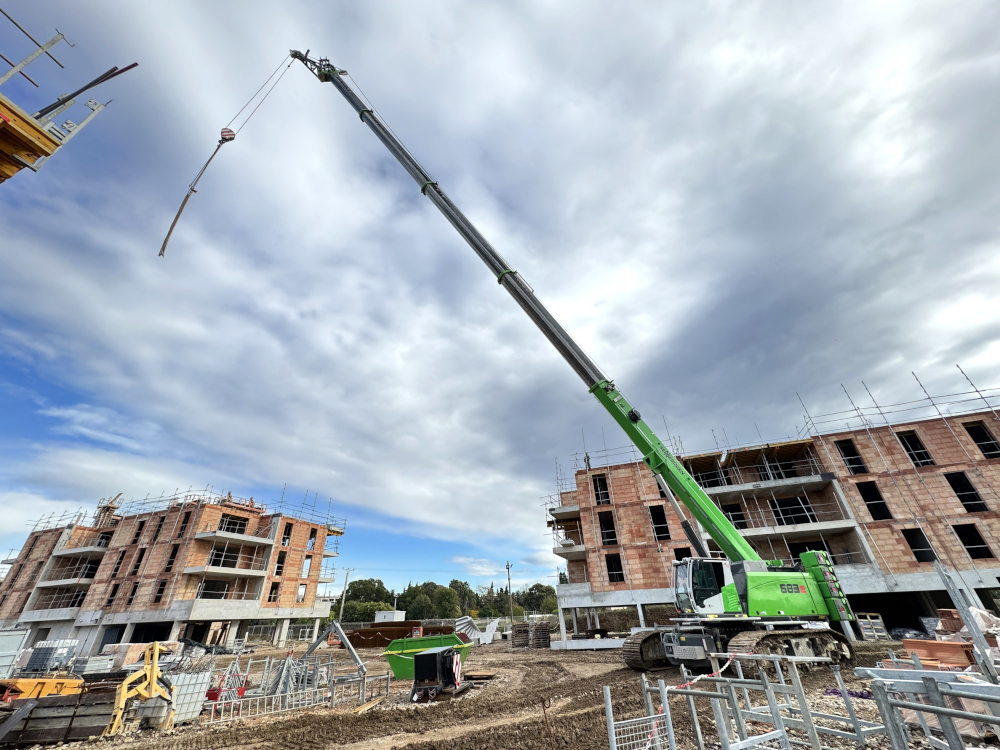Telecrawler used in place of tower crane
19 April 2024Local regulations prevent tower crane use so contractor utilises a radio controlled Sennebogen telecrawler instead.
A Sennebogen telecrawler has performed the functions of a tower crane on a site in the French riviera. A new, nature-oriented residential complex in the municipality of Hyères les Palmiers is being constructed by Comet Paca, a major company specialising in detached houses and apartment blocks. Local regulations prevented the use of a tower crane on the entire construction site so it used a Sennebogen 683 E telecrawler, supplied and operated by French transport, lifting and handling specialist M&S Translev, instead.
The telecrawler carried out the shell construction work. It handled all the lifting work in one part of the construction site and fulfilled the transport requirements for the three four-storey building complexes.
The Sennebogen 683 E was used to lift common precast elements, conventional and insulated blocks, concrete buckets, rubble, plus conventional building components such as columns, beams and formwork.
It has a 42 m full-power boom, so can cover a large working area to ensure the simultaneous construction of all three buildings. The crane is positioned in the centre of the site and moves on its crawler tracks as required to meet the needs of each team. Moving and telescoping under load over the entire length of the boom is no problem at all.
A high-capacity tower crane would normally be used on such construction sites. Using a telecrawler in its place is unusual, and the way in which it was used was also different: it was entirely controlled by radio.
Moving (with or without a load), lifting and positioning were all controlled remotely. Sébastien Greuzard, managing director of M&S Translev, was the operator. "It is unique that I can operate the crane precisely with radio control. I can carry out lifting operations and position the loads precisely by being right next to the workers in the assembly areas. I can be on the ground or in the working area on the floors of the buildings."
The increased safety is an essential element that was also highlighted. As the teams on the construction site put it: "With this working technique and thanks to this crane, the operator has the entire working area of the machine directly in view. Manoeuvres are much safer when the crane operator is operating close to his colleagues instead of blindly with a radio link or a camera."
A video of the job can be seen here




